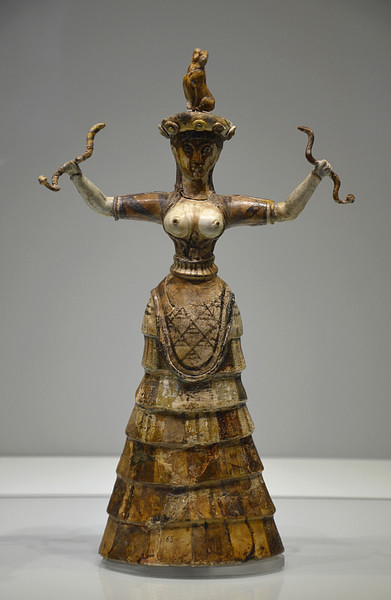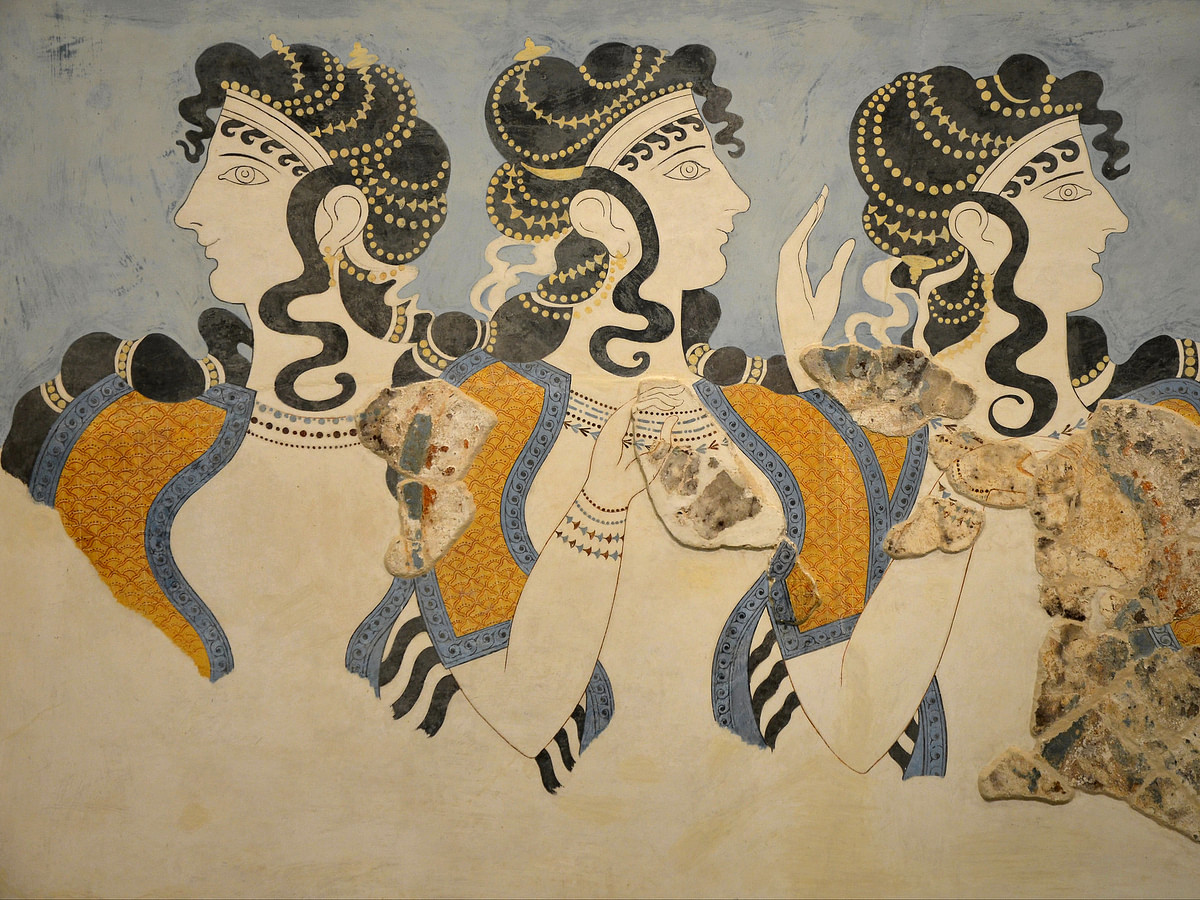### Women's Clothing:
Mycenaean women's dresses were typically long and often featured colorful patterns and intricate designs. The dresses usually consisted of several components:
1. **Bodice**: The upper part was often a fitted bodice, sometimes designed to enhance the waist and bust through tight lacing or a belt.
2. **Skirt**: The skirt could be floor-length, flounced, and elaborately decorated with patterns such as spirals, waves, and other geometrical shapes, possibly indicating status or regional styles.
3. **Sleeves**: Sleeves were sometimes part of the dress, ranging from short to long, and in some depictions, they appear to be elaborately decorated or flounced.
4. **Overgarments**: Shawls and cloaks might be worn over the shoulders, especially in cooler weather or for ceremonial purposes.
### Men's Clothing:
Mycenaean men typically wore shorter garments compared to women:
1. **Loincloth**: The simplest garment, often worn during labor or in warmer conditions.
2. **Tunic**: A more common garment, tunics could be knee-length and were often belted at the waist. They might be decorated along the hem or have patterns similar to those found in women’s clothing.
3. **Cloaks**: For cooler weather or higher-status individuals, cloaks were worn, which could be draped in various styles and were often fastened at the shoulder with a pin or brooch.
### Materials and Decoration:
The textiles used in Mycenaean clothing were likely made from linen and wool, with the wealthy possibly having access to imported materials such as silk or cotton. Clothing could be decorated with dyes from natural sources, leading to vibrant colors. Embroidery and embellishments such as gold or precious stones could further signify the wearer's status.
### Jewelry and Accessories:
Both men and women adorned themselves with various accessories:
- **Jewelry**: Rings, bracelets, necklaces, and earrings were common and crafted from gold, silver, and gemstones.
- **Belts and Girdles**: Often used to cinch the waist and hang tools or weapons.
- **Footwear**: Leather sandals or boots were worn, particularly by those who could afford them.
### Symbolism:
Clothing often had symbolic meaning, possibly representing social status, regional identity, or roles within religious or ceremonial contexts. The complexity and richness of a garment could indicate higher social status.
Mycenaean clothing not only served practical purposes but also played a significant role in the social and cultural expression of the time, much of which can be reconstructed from archaeological findings and depictions in art.

1080 × 864
Source:https://daisyviktoria.com/product/ancient-minoan-mycenaean-costume-pdf-tutorial/

798 × 570
Source:https://womeninantiquity.wordpress.com/2017/03/29/mycenaean-females-clothing-hair-and-jewellery/

1000 × 539
Source:https://www.pinterest.ca/pin/minoanish--7388786879849940/

1080 × 864
Source:https://daisyviktoria.com/product/ancient-minoan-mycenaean-costume-pdf-tutorial/

713 × 570
Source:https://www.etsy.com/listing/1156082784/ancient-minoan-mycenaean-costume-pdf

600 × 391
Source:https://www.worldhistory.org/article/1723/beauty-in-the-bronze-age---minoan--mycenaean-fashi/

1400 × 1198
Source:https://world4.eu/cretan/
878 × 602
Source:https://www.quora.com/What-is-known-about-the-clothing-worn-by-women-and-men-in-ancient-Crete-and-Mycenae-Mycenaeans

394 × 236
Source:https://www.pinterest.com/allievaltakis/mycenaean-costume/

900 × 1200
Source:https://www.worldhistory.org/article/1723/beauty-in-the-bronze-age---minoan--mycenaean-fashi/
